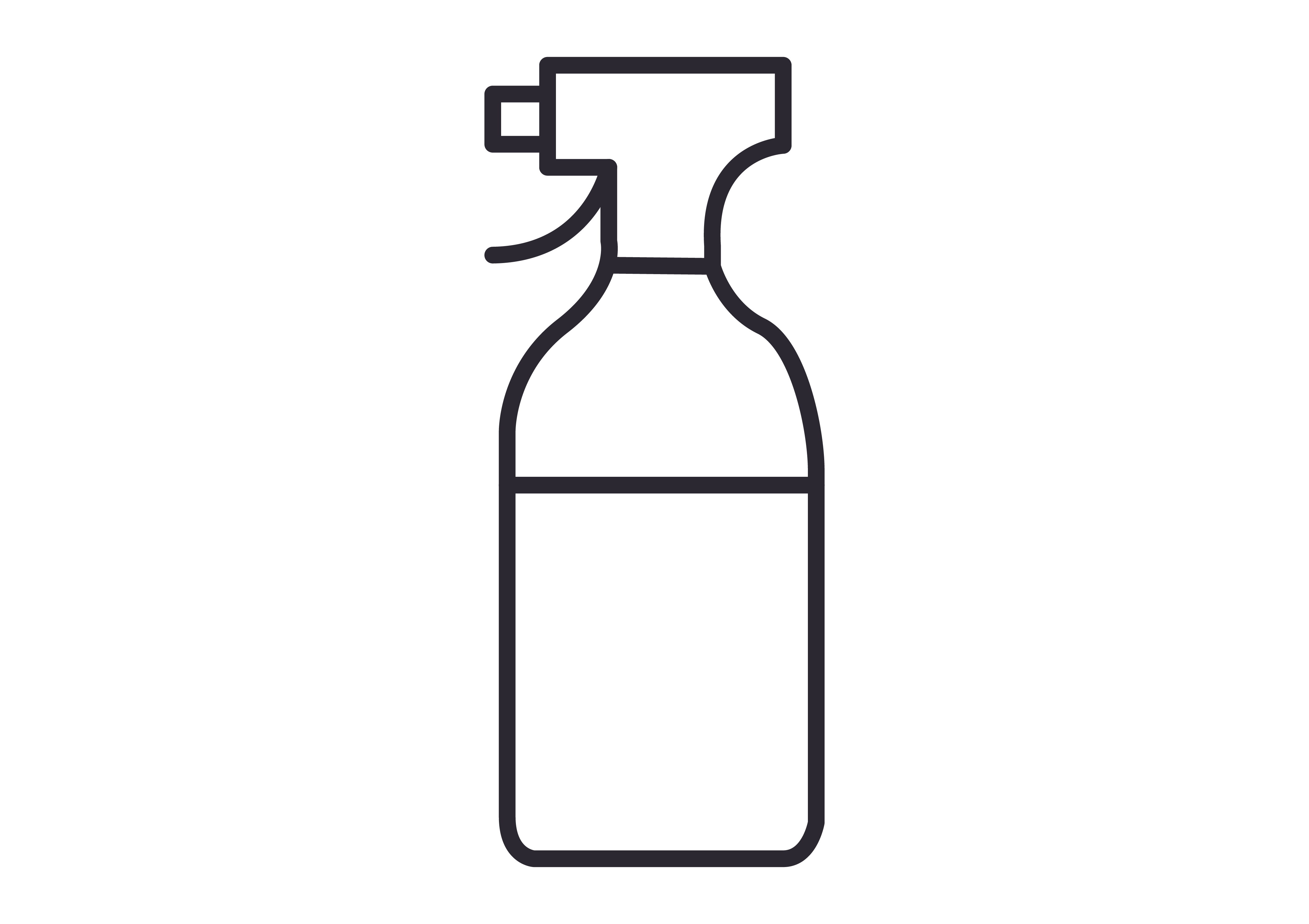The symptoms of vaginal thrush you need to know
Are you experiencing discomfort, itching, or unusual discharge down there? You might be dealing with a common but often misunderstood condition called vaginal thrush. Don't worry, you're not alone. Many people go through this at some point in their lives. But what exactly is vaginal thrush, and how can you identify its symptoms? In this blog, we'll decode the signs and symptoms of vaginal thrush, so you can understand what's happening and take the necessary steps to find relief. From persistent itching to changes in vaginal discharge, we'll break down each symptom and provide valuable insights on how to manage this condition effectively. So, if you're ready to gain a better understanding of vaginal thrush and how to deal with its uncomfortable symptoms, keep reading…
What is vaginal thrush?
Vaginal thrush, also known as vulvovaginal candidiasis, is a common fungal infection caused by the overgrowth of Candida albicans, a type of yeast that naturally resides throughout the body. Normally, the presence of this yeast is balanced by other beneficial bacteria in the vagina and your body. However, certain factors can disrupt this balance, leading to an overgrowth of Candida and the development of vaginal thrush.
The symptoms of vaginal thrush can vary from mild to severe, and they may come and go over time. Some women may experience recurrent episodes of thrush, while others may only have it once. Understanding the symptoms is crucial in order to seek appropriate treatment and avoid unnecessary discomfort.
Vaginal thrush is not considered a sexually transmitted infection (STI), although it can be passed on through sexual contact. It can also occur in people who are not sexually active as it can be caused by a hormonal balance. Factors such as hormonal changes, weakened immune system, certain medications, and underlying health conditions can increase the risk of developing vaginal thrush.
Causes and risk factors of vaginal thrush
There are several factors that can contribute to the development of vaginal thrush. Understanding these causes and risk factors can help you prevent future episodes and manage the condition more effectively.
One of the primary causes of vaginal thrush is an overgrowth of Candida albicans. This can occur when the natural balance of bacteria and yeast in the vagina is disrupted. The following factors can increase the risk of developing vaginal thrush:
- Antibiotics: Taking antibiotics can disrupt the natural balance of bacteria in the vagina, allowing Candida to overgrow.
- Hormonal changes: Hormonal fluctuations during pregnancy, menstruation, or menopause can create an environment that is more conducive to the growth of Candida.
- Weakened immune system: People with weakened immune systems, such as those with HIV/AIDS or undergoing chemotherapy, are more susceptible to infections, including vaginal thrush.
- Diabetes: Uncontrolled diabetes can lead to elevated blood sugar levels, which can promote the growth of Candida.
- Use of certain medications: Corticosteroids, immunosuppressants, and oral contraceptives can increase the risk of developing vaginal thrush.
- Tight clothing: Wearing tight-fitting clothing, especially non-breathable materials, can create a warm and moist environment that is favourable for the growth of Candida.
It's important to note that while these factors can increase the risk of developing vaginal thrush, they do not guarantee that you will develop the condition. By understanding the causes and risk factors, you can take proactive steps to minimise your chances of experiencing vaginal thrush.
Common symptoms of vaginal thrush
Vaginal thrush can cause a range of symptoms that can vary from person to person. Some people may experience mild symptoms that go away on their own, while others may have more severe and persistent symptoms. Here are some of the common symptoms of vaginal thrush:
- Itching and irritation: One of the most common symptoms of vaginal thrush is persistent itching and irritation in and around the vagina. This itching can be intense and may worsen at night.
- Abnormal discharge: Vaginal thrush can cause changes in the colour, consistency, and smell of vaginal discharge. The discharge may appear thick, white, and curd-like, similar to cottage cheese. Read our guide to vaginal discharge colours for further detail
- Redness and swelling: The vulva, which is the outer part of the genitalia, may become red, swollen, and sensitive to touch. This can cause discomfort and pain.
- Burning sensation: Some people may experience a burning sensation when urinating or during sexual intercourse. This can be a result of the irritation caused by the overgrowth of Candida.
- Soreness and pain: Vaginal thrush can cause general soreness and discomfort in the vaginal area. The skin may feel raw and tender, making it uncomfortable to perform daily activities.
These symptoms can vary in severity and may come and go over time. It's important to note that these symptoms are not exclusive to vaginal thrush and can be caused by other conditions as well such as bacterial vaginosis. If you're experiencing any of these symptoms, it's best to consult a healthcare professional for an accurate diagnosis.
Diagnosing vaginal thrush
If you suspect that you have vaginal thrush, it's important to consult a healthcare professional for an accurate diagnosis. They will perform a thorough examination and may also conduct some tests to confirm the presence of Candida. The most common methods used to diagnose vaginal thrush include:
- Visual examination: A healthcare professional will visually inspect the vaginal area for any signs of redness, swelling, or discharge.
- Microscopic examination: A sample of vaginal discharge may be collected and examined under a microscope to identify the presence of Candida.
- pH testing: The pH level of the vaginal secretions may be tested using pH strips. Vaginal thrush often leads to an increase in pH levels, indicating an overgrowth of Candida.
- Culturing: In some cases, a sample of vaginal discharge may be cultured in a laboratory to determine the specific type of Candida causing the infection.
By accurately diagnosing vaginal thrush, healthcare professionals can provide appropriate treatment options and help you manage the condition effectively.
Treatment options for vaginal thrush
The treatment of vaginal thrush typically involves antifungal medications that are specifically designed to eliminate the overgrowth of Candida. These medications can be in the form of creams, suppositories, or oral tablets. The choice of treatment depends on the severity of the infection and the individual's preferences.
It's important to follow the prescribed treatment regimen and complete the full course of medication, even if the symptoms improve. This helps ensure that the infection is completely eradicated and reduces the risk of recurrence.
In addition to medication, there are also some self-care measures that can help alleviate the symptoms and prevent future episodes of vaginal thrush. These include:
- Good hygiene practices: Keeping the genital area clean and dry can help prevent the overgrowth of Candida. Avoid using harsh soaps or douches, as they can disrupt the natural balance of bacteria in the vagina.
- Wearing breathable underwear: Opt for organic cotton underwear that allows air to circulate and moisture to evaporate. Avoid tight-fitting synthetic underwear, as they can trap heat and moisture, creating an ideal environment for Candida to thrive.
- Avoiding irritants: Certain products, such as scented soaps, bubble baths, and vaginal sprays and even your period care, can irritate the delicate vaginal tissue and increase the risk of vaginal thrush. Avoid using these products or opt for unscented and gentle alternatives.
- Managing diabetes: If you have diabetes, it's important to keep your blood sugar levels under control. This can help prevent the overgrowth of Candida and reduce the risk of recurrent vaginal thrush.
By combining medication with self-care measures, you can effectively manage vaginal thrush and reduce the frequency and severity of symptoms.
Preventing vaginal thrush
Prevention plays a crucial role in managing vaginal thrush and reducing the risk of recurrent episodes. By adopting certain preventive measures, you can minimise the chances of developing vaginal thrush. Here are some tips to help prevent vaginal thrush:
- Maintain good hygiene: Keep the genital area clean and dry, and avoid using harsh soaps or douches that can disrupt the natural balance of bacteria in the vagina.
- Avoid irritants: Steer clear of scented soaps, bubble baths, and irritant-filled period care that can irritate the vaginal tissue and increase the risk of vaginal thrush.
- Choose breathable underwear: Opt for cotton underwear that allows air to circulate and moisture to evaporate. Avoid tight-fitting synthetic underwear that can trap heat and moisture.
- Practise safe sex: Using condoms during sexual intercourse can reduce the risk of transmitting Candida and other infections.
- Avoid unnecessary antibiotic use: Antibiotics can disrupt the natural balance of bacteria in the vagina, increasing the risk of vaginal thrush. Only take antibiotics when necessary and under the guidance of a healthcare professional.
- Manage diabetes: If you have diabetes, it's crucial to keep your blood sugar levels under control to prevent the overgrowth of Candida.
By incorporating these preventive measures into your daily routine, you can significantly reduce the risk of developing vaginal thrush and maintain a healthy vaginal environment.
When to see a doctor for vaginal thrush
While vaginal thrush can often be managed with over-the-counter treatments and self-care measures, there are instances when it's essential to seek medical attention. If you experience any of the following, it's advisable to consult a healthcare professional:
- Severe or recurring symptoms: If your symptoms are severe, persistent, or recurrent, it's important to consult a healthcare professional for a proper diagnosis and treatment.
- First-time symptoms: If you're experiencing symptoms of vaginal thrush for the first time, it's best to consult a healthcare professional to rule out other possible causes and ensure an accurate diagnosis.
- Pregnancy: If you're pregnant and suspect that you have vaginal thrush, it's crucial to seek medical advice, as some antifungal medications may not be suitable during pregnancy.
- Underlying health conditions: If you have a weakened immune system or any underlying health conditions, it's important to consult a healthcare professional for appropriate treatment and management of vaginal thrush.
Remember, healthcare professionals are trained to diagnose and treat vaginal thrush, and they can provide personalised advice based on your specific situation.
Myth-busting: Common misconceptions about vaginal thrush
There are several misconceptions and myths surrounding vaginal thrush. It's important to separate fact from fiction to ensure accurate information and effective management of the condition. Here are some common misconceptions about vaginal thrush:
- Vaginal thrush is caused by poor hygiene: Vaginal thrush is not caused by poor hygiene. In fact, excessive washing or using harsh soaps can disrupt the natural balance of bacteria in the vagina and increase the risk of vaginal thrush.
- Vaginal thrush is a sexually transmitted infection (STI): While vaginal thrush can be passed on through sexual contact, it is not considered a sexually transmitted infection. It can also occur in people who are not sexually active.
- Only women can get vaginal thrush: While vaginal thrush is more common in women, men can also develop an overgrowth of Candida in the genital area, leading to symptoms similar to vaginal thrush.
- Vaginal thrush is a sign of poor overall health: Vaginal thrush can occur in women of all ages and health statuses. It is not necessarily an indication of poor overall health.
By debunking these common misconceptions, we can foster a better understanding of vaginal thrush and promote accurate information for effective management.
Conclusion
Vaginal thrush is a common condition that can cause discomfort and distress. By understanding the symptoms and causes of vaginal thrush, you can take proactive steps to prevent and manage the condition effectively. Whether it's through medical treatment, self-care measures, or lifestyle changes, there are various options available to alleviate symptoms and reduce the risk of recurrent episodes. Remember, if you're experiencing symptoms of vaginal thrush, it's important to consult a healthcare professional for an accurate diagnosis and appropriate treatment. By arming yourself with knowledge and seeking the necessary support, you can
Got another question about thrush? Drop us a message support@andsisters.conm

















